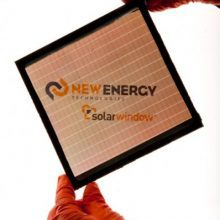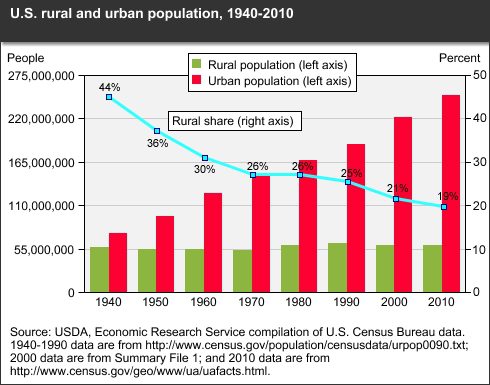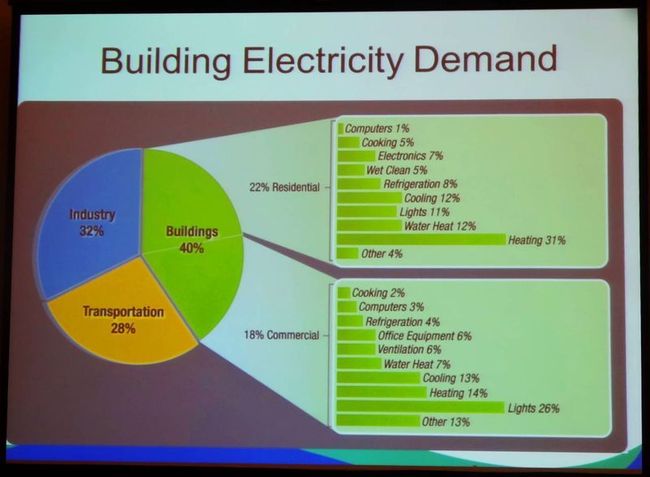There are an estimated 80 million detached homes and 5 million commercial buildings in the U.S., and they account for nearly 40 percent of total U.S. energy consumption (about 40 quadrillion BTUs), according to the Department of Energy’s Energy Information Administration (EIA). Given our reliance on coal and natural gas for the electricity, heating and cooling these buildings require, residential and commercial buildings accounted for 10 percent of climate-warming U.S. greenhouse gas (GHG) emissions in 2012.

Deploying technologies that enable commercial and residential buildings to generate their own clean renewable electricity and energy would go a long way toward improving urban living conditions and quality of life, as well as significantly reducing energy costs over the long run. Moreover, it would provide a big boost regarding our ability to address increasingly pressing regional and global issues, such as water use and resource management, waste management, land degradation, air pollution and climate change.
New Energy Technologies is one of what’s been a growing number of companies looking to identify and develop innovative clean energy solutions for urban environments. Undertaking groundbreaking research and development (R&D) into see-through organic photovoltaic (OPV) films that can turn glass and plastic surfaces into clean, renewable energy generators, the Columbia, MD-based company on May 8 announced it had raised the bar for the ability of transparent organic PV films to produce electricity over 50 percent.
Turning buildings into clean energy generation hubs

The social, economic and ecological pressures associated with ongoing urbanization were put into sharp focus at the “Planet Under Pressure 2012” conference in London. With world population forecast to increase from 7 billion today to more than 9 billion by 2050, humanity’s urban footprint will take up 1.5 million more square kilometers of land by 2030 at current rates — an area comparable to that of France, Germany and Spain combined — it was noted during the conference. According to conference organizers,
“That translates into an average 1 million more city dwellers every week for the next 38 years, with the world’s total urban population forecast to increase from 3.5 billion today to 6.3 billion by 2050.”
What if all those residential and commercial buildings could generate clean, renewable energy? That’s the goal New Energy Technologies is working towards. Transparent and able to generate electricity in shaded and low-light conditions, management foresees a day when its SolarWindow arrays will be standard-issue in retrofitting old, as well the construction of new commercial and residential buildings.
Working closely with the Department of Energy’s National Renewable Energy Laboratory (NREL), New Energy recently built its largest SolarWindow array yet. At more than 232 square centimeters, the latest SolarWindow is more than 35 percent larger than any the company fabricated previously.
In addition, they’re produced with “highly-uniform, colored tints preferred by commercial window manufacturers for installation on skyscrapers worldwide,” the company highlights in a press release. John A. Conklin, company president and CEO commented,
“Today, we’ve revealed a record-breaking, largest-area see-through, organic photovoltaic (OPV) SolarWindow™ array that addresses tall-tower and commercial building glass requirements, they also bear the promise of facile scale-up capabilities and unparalleled manufacturability.”
Record-setting see-through OPV power generation

On May 8, the company announced that in certified, independent testing by NREL its SolarWindow set a new record for generating electricity while remaining see-through, surpassing the previous mark by over 50 percent.
Based on the results, New Energy Technologies estimates “that a SolarWindow installation on a fifty (50) story commercial building in Florida could generate enough electricity to power at least 100 homes while eliminating the equivalent carbon emissions produced by vehicles driving approximately 2,750,000 miles per year.”
“We are engineering our see-through SolarWindow™ products to generate sustainable electricity, and be aesthetically attractive, while being developed at a cost which makes economic sense to our customers,” Conklin was quoted as saying. “We also remain mindful of ease-of-manufacturing, scale-up of size, and overall environmental benefits – all important considerations for our potential customers and future commercial partners in the commercial buildings sector.”
Organic PV cells, such as those embedded in SolarWindows, can make up in high volume and low manufacturing cost what they lack in energy conversion efficiency. As Dr. Scott Hammond, New Energy Technologies’ principal scientist, explained, “The unique properties of OPV allow for low-cost, high-volume manufacturing and provide many advantages over conventional, inorganic PV technologies for window applications.”
“We’ve worked hard to achieve both large-scale and high power conversion efficiency. Our record-breaking SolarWindow™ module is the result of various methods of fabrication and materials, which have helped us overcome numerous challenges unique to our OPV device technology. I’m grateful for the support of the talented scientific team at NREL, who have helped us achieve this very significant milestone.”
SolarWindow coatings, for instance, could be applied to all four sides of a building, vastly increasing the surface area capable of producing electricity. In addition, New Energy’s SolarWindow can produce electricity in diffuse and shaded sunlight, as well as from artificial lighting, including fluorescent, LED and incandescent lighting, conditions in which conventional PV systems suffer large efficiency losses or can’t produce electricity at all.
Image credits: 1) New Energy Technologies; 2) USDA; 3) US EIA


